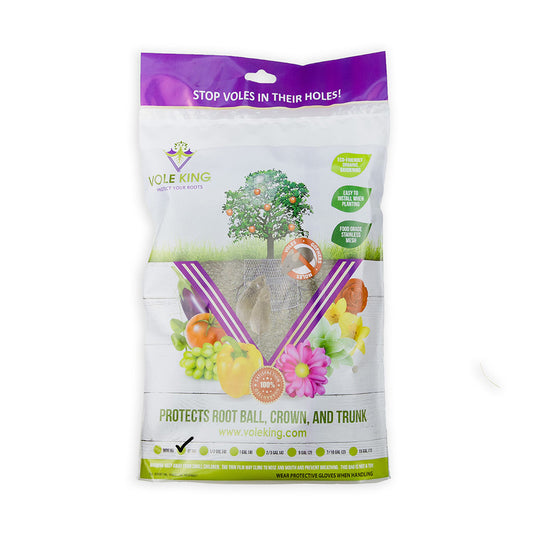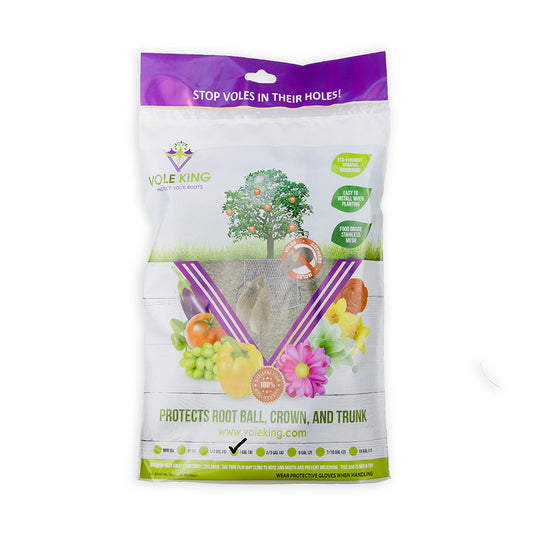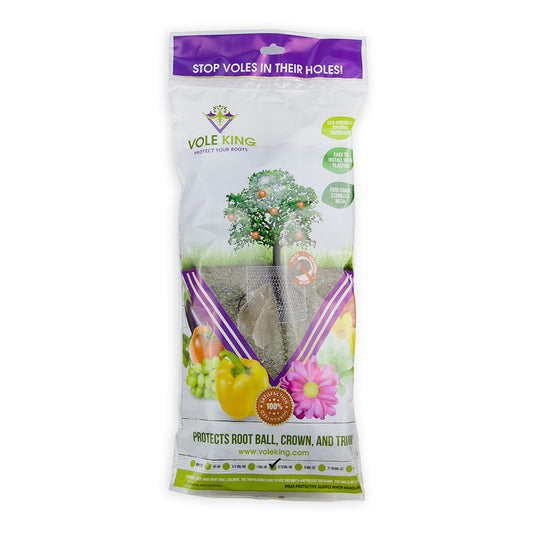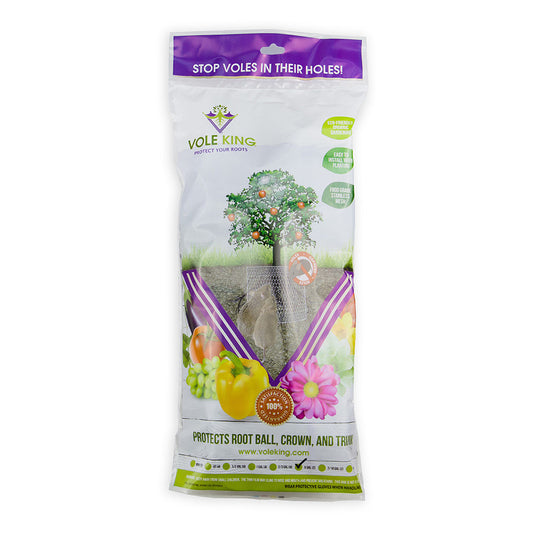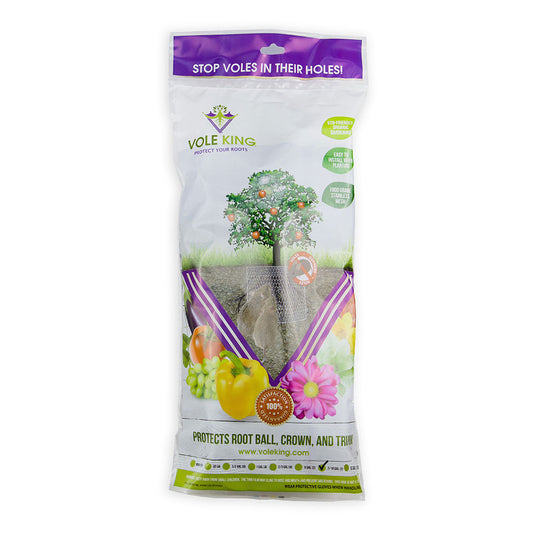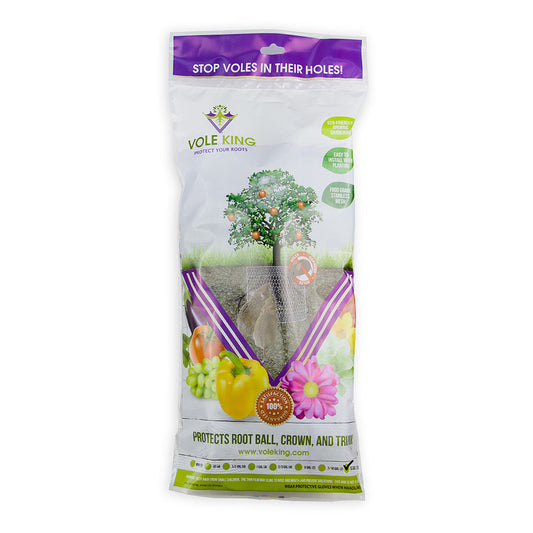
Spring Pruning
Share
Hello friends, and Happy April to you! It’s officially Spring, and our gardens and landscapes are finally coming back to life after a cold winter! I’m sure you’ve heard the saying “seeing the world through rose-colored glasses”...this time of year in NC we’re seeing the world through a yellow-colored haze of pollen!! As much as my allergies are not a fan, the gorgeous blooms and bursts of color make it all worthwhile. And speaking of beautiful end results, did you know that proper pruning can help your trees and shrubs thrive and put out their best display of color? Cutting back the old encourages new growth with bigger healthier blooms! If you’re wondering how, or what exactly needs to be pruned this time of year, have no fear, Vole King’s horticultural expert is here to guide you!
First things first, make sure you’re using clean, sharp, quality tools. You don’t want to accidentally spread disease with contaminated pruners, or damage the plant tissues with a dull blade. Pruning wounds the plant. Your goal is to get the plant to heal itself as quickly as possible. Clean those blades with a bleach solution or isopropyl alcohol before and in between cuts, and sharpen them before you begin.
Where you make your cut also impacts how quickly the plant heals. The best place to prune is just above a node. A node is the area of growth on the stem of the plant, where the buds are located. These buds will eventually grow into leaves, stems, and/or flowers, depending on the plant. If you can’t actually see a bud, look for a raised area, scar (from where a previous leaf has fallen away), or knob, or a solid section of stem in a hollow stemmed plant. Make your cut just above the node, sloping down and away from the bud. Cutting at a 45 degree angle allows water to run off, rather than collect at the wound and encourage disease. This will allow for a clean healing wound that won’t dry out the dormant buds in the node, so they can grow into new stems or flowers. If you cut too close to a bud, the bud will dry out and not heal well. If you cut below the node, you will leave too long of a stub, which can dry out, possibly rot, and could make the plant prone to disease/infection.
How do you decide which parts to prune, and which parts to leave? When shaping your plant, prune just above nodes that have outward facing buds, as new growth will grow in the direction the buds are facing. This will give your plant a nice shape, as well as help the center of the plant stay open to allow for air circulation and sunlight. Limiting overgrowth in the center will also help prevent disease and bug infestations.
Now, what to prune… Start off with summer blooming shrubs that develop flowers on current growth, such as (most) roses and butterfly bushes. Prune these in early spring while they’re still dormant. This will encourage new growth and lots of flowers.
It’s best to prune spring flowering ornamental shrubs, such as rhododendrons, lilacs, viburnum, and forsythia, right after their blossoms have faded. This allows you to enjoy their full beauty before you cut them back. They develop their buds for the next season over the summer, so it’s important not to prune these in the fall or winter or they won’t bloom.
It’s also a great time to prune young fruit trees to give them an ideal shape, and develop a strong scaffold and branch system. This will allow them to focus their energy on producing fruit, rather than growing unnecessary branches. Prune as soon as buds start to form. You want branches to be evenly spaced around the trunk, with no branch directly on top of another, or it will block out life-giving sunlight. It’s also important to prune off any damaged wood, rubbing branches, or water spouts and suckers, as these interfere with normal growth and will prevent the tree from reaching its full potential.
Prune your hedges and topiaries to give them shape after they have produced leaves in early spring (if you missed pruning your hedges in winter). With flowering hedges, wait until right after the blooms have turned brown. This gives the plant time to grow new buds for next year, regardless of whether it buds on old or new growth.
Go ahead and prune back your woody perennial herbs, such as rosemary and oregano, to a desirable shape right before seasonal growth begins.
Finally, it’s always a great time to prune back dead or dying, diseased, or damaged plants, trees, and shrubs. The perk of new spring growth is it can be easier to see when you have a problem! Don’t forget to clean those pruners in between cuts so you don’t spread disease! On that note, any debris with disease or pest infestation needs to go in the yard waste trash or firepit - don’t compost this!
We hope this helps as a general guideline, but if you’re ever in doubt, the friendly folks at your favorite local garden center or cooperative extension office would be happy to help you identify your plant, and offer tips on the best time to prune based on your climate or specific needs.
What will you be pruning back this Spring??? Show us pics on our social media…you can find us on FaceBook, Instagram (@vole__king), and YouTube! Be sure to protect all of your new plantings with Vole King wire mesh baskets and rolls! Happy Planting!
